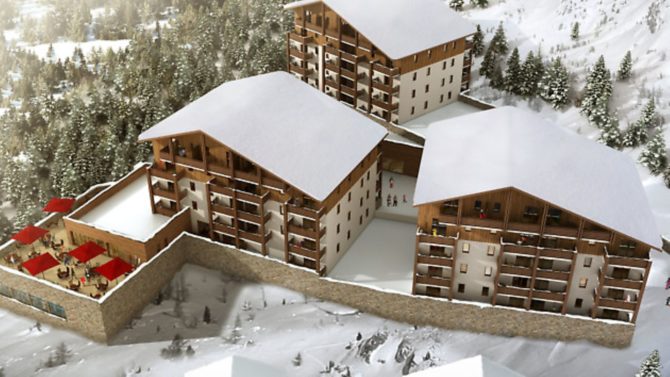What is the French leaseback scheme?

Buying a leaseback property in France is becoming popular with those looking for a hassle-free property purchase in France, especially in tourist destinations like the Alps and the coast. But what is a leaseback, how does it work and what are the advantages and disadvantages?
What is a leaseback?
The leaseback scheme was introduced by the French government in 1967 to encourage investment in tourist destinations throughout France in order to increase the supply of quality accommodation. A leaseback property transaction is the purchase of a freehold furnished property in a serviced residential building. Buyers own the freehold of the property, which is then leased back to a management company for a period of 20 years – this is usually split in to two terms and the minimum lease agreement is nine years. Buyers are entitled to a refund of the 20% VAT paid on the purchase price and owners are guaranteed a rental income and benefit from a set number of weeks of personal usage each year. Leaseback schemes are often referred to as résidences de tourisme classées, designed for those seeking a holiday home for a few weeks each year, and are located in popular areas such as ski and coastal resorts, where self-catering accommodation is in particularly high demand.
How does the leaseback scheme work?
Leaseback properties should not be confused with timeshare. The buyer owns the freehold of the property and the full price is shown in the title deed. The purchaser of a leaseback investment will be required to sign a commercial lease agreement with a management company at the time of the signature of the deed of purchase (acte de vente). A commercial lease is a contract giving a property owner the right to rent the property out through a management company over a minimum period of nine years. The management company has the right to renew the lease unless the owner informs the company at least six months before the term ends via recorded post or bailiff. The management company is entitled to compensation if the owner refuses to renew.
The owner is guaranteed a rental income by the management company, usually between 2-5%. This is subject to VAT and may be revised according to rental indexes published by INSEE.
The owner is entitled to occupy the property for a set period each year. This is usually between two and six weeks, spread over high, medium and low seasons and should be clearly stipulated in the contract. In some cases there is the possibility of exchanging these weeks with accommodation in another resort. Often you can negotiate the numbe rof weeks of personal use you have but this will usually reduce the rental income you will receive.
The property will be furnished and these need to be included in the property description or contract. If any furniture needs to be replaced at the end of the lease this will be at the owner’s cost. The maintenance costs of the property can be specified in the contract but usually the management company is responsible for the maintenance costs and running charges, although sometimes owners have to pay a contribution. Major repairs remain the responsibility of the owner.
You can sell your leaseback property and, providing the new owner takes on the commercial contract and continues to use it as a leaseback you don’t have to pay any VAT. If they don’t continue the lease then you will be liable for 1/20th of the VAT due for every year still left on the contract.
What are the advantages of leaseback?
Buyers of leaseback are entitled to a refund on the 20% VAT due on a property purchase in France. In most cases the developer will advance the 20% VAT for the buyer when the purchase completes which means the buyer doesn’t pay the VAT usually due making the purchase considerably cheaper. However, all property owners in France are required to pay taxe foncière so this is still payable by the buyer.
The owner is guaranteed a rental income from their property, this is usually 2-5% of the property’s value, adjusted annually for inflation according to rental indexes published by INSEE (National Institute of Statistics).
The property is managed by a management company which takes care of the rental and general maintenance of the property so the owner doesn’t need to worry about it.
What are the disadvantages of leaseback?
The main drawback of a leaseback is that the owner only has restricted access to their property. The contract with the management company will stipulate how much use the owner gets but it is usually 2-6 weeks which are split over high, medium and low season. They have to be arranged in advance so, most of the time, you can’t just suddenly decide to stay in your property for the weekend. In some cases there is the option to negotiate the number of weeks of personal use you get but this will decrease your rental income.
The property must remain a leaseback for at least 20 years otherwise it is no longer exempt from VAT and the owner will have to pay the government 1/20th of the VAT that was due at the time of purchase for every year still left of the 20. So if you decide to sell your property you must make sure the new owners are buying it as a leaseback otherwise you will be liable for the VAT rebate.
Often the property is sold furnished and the decoration and furniture is usually the same as the other properties in the residence so the owner is unable to decorate to their own tastes or change the furniture.
Loïc Raboteau is a French legal advisor at Francophile Legal Consulting
4 reasons to buy a new-build property in France
Share to: Facebook Twitter LinkedIn Email


